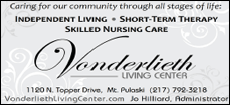|
One of the most
difficult situations in which you need to make the "home care vs.
professional care" decision may be when something affects your
joints. The joints do some important work for the human body, and
figuring out when things will get better on their own and when you
may have a more serious problem is not easy.
William Ungureit, clinical director of the physician assistant
training program at South University in Tampa, Fla., says there are
some important signs that will tell you when to seek professional
care.
"If the joint is warm to the touch and swollen, seek immediate
help," Ungureit says. "Those are signs of a possible infection,
something that won't get better on its own."
Likewise, if you know that the joint pain is the result of an injury
such as a fall, put an ice pack on the injury and seek help right
away. This type of injury will usually be accompanied by swelling
and the inability to bear weight.
Otherwise, painful joints often can be treated at home with
over-the-counter pain relievers such as ibuprofen or naproxen
sodium. And what about ice and heat?
"Cold therapy (ice) can be used for chronic injuries, such as pain
after running," says Ungureit. "Heat therapy is recommended for
injuries that have no inflammation or swelling. Heat is ideal for
sore, stiff, nagging muscle or joint pain."
If you decide to treat the pain at home, you still need to see your
primary care physician if the pain lasts more than two weeks. Your
physician may offer prescription pain relievers or other treatment.
Treatment for chronic joint pain may be more involved, Ungureit
says. "Non-inflammatory joint pain usually signifies osteoarthritis,
which is caused by trauma to the joint or degeneration of the joint
tissue in weight-bearing joints." That means the knee, hip and
spinal joints.
According to the U.S. Bone and Joint Initiative, a movement
sanctioned by the World Health Organization, one in five Americans
has some form of arthritis. And contrary to the perception that
arthritis is a disease of the elderly, more than half of those with
arthritis are under the age of 65.
There is no cure for osteoarthritis, but it can be managed with pain
killers, physical therapy, steroid injections such as cortisone, or
other injections to help lubricate the joint. As a last resort,
surgery to realign or completely replace a joint may be an option.
Complete joint replacement is now available for the knee, shoulder,
hip and ankle.
[to top of second
column] |

Although you
can't prevent osteoarthritis, you can do things to help lessen its
onset and its painful effects. "Losing weight and exercising
regularly are great ways to combat osteoarthritis," says Ungureit.
"When it comes to joints, we say that 'motion is lotion.' Dropping
five or 10 pounds may not seem like much, but five pounds per step
adds up fairly quickly on your joints."
What about herbal supplements and other alternative treatments for
joint pain? Ungureit says there's nothing wrong with trying them,
but make sure you tell your doctor which ones you are thinking about
taking, since some supplements can interfere with other medications.
So while you may not need to consult your doctor for every ache,
there are some serious signs to look for, and some effective steps
that both you and your doctor can take to help relieve those painful
joints.

 |